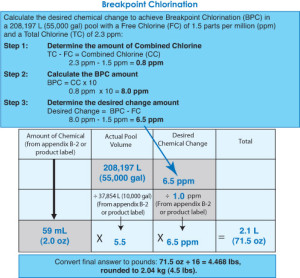Keeping staff content
The number of staff required to manage an Olympic-sized facility is often disproportionately larger than what would be found at most smaller facilities. This is due to necessity in providing not only continuous lifeguard coverage, but also operator, maintenance personnel, and the supervisors necessary to provide administrative co-ordination. Minimum coverage must be maintained at all times or the doors cannot open. Further, all staff members must be trained appropriately and all training must be documented. This in itself can quickly become a major task.
Unfortunately, another aspect to requiring a large staff is the likelihood of personnel issues. Normally with larger facilities comes more complex human resource departments, which can assist in hiring, recovering a disgruntled employee, and when necessary, terminating a problem employee. Those who have worked with larger human resource departments know they can often work at their own pace. For instance, where a large facility operator may find it takes more than a year of interventions, negotiations, meetings and a large amount of documentation before a troublesome employee can be terminated, the same operator at a mid-size facility could have dismissed the same employee within a week.
Communication is key
Accidents can happen in all types of facilities. However, as facility size increases, and the number of patrons escalate, it is more likely for an accident to occur. This increases the need for aquatic risk management and comprehensive emergency response plans (ERPs). Training in risk management and ERPs is beyond that offered in basic operator.
Therefore, the capstone for all operations is communication. This must go beyond staff training and publishing a mission statement to the public. Communications should be bidirectional, timely, and free to carry both good and bad news.
Here is a case example: The Sunday operator of an aquatic facility failed to report the pool’s chlorine tank was empty until the supervisor arrived Monday morning. By this time, however, a major algae bloom had started. The operator’s failure to pass along the critical information in a timely manner led to a potential recreational water illness (RWI) outbreak as well as the avoidable pool closure, which was required to correct the problem. In hindsight, a simple 60-second phone call would have prevented both. Further, if this would have happened during a swim meet, the damage to the facility’s reputation would have been enormous.
While training and demonstrating the desired traits for personnel can help, it is also necessary to have the right mix of personalities and maturity on each and every shift to avoid these problems.
Water and air quality
Beyond basic water balance and sanitation, two health issues stand out—chloramines and Cryptosporidium (Crypto). While these problems are not unique to Olympic competition pools, the level of difficulty they pose can be just as great as the pool size.
Chloramines
Chloramines are the bane of most aquatic facilities and are a major concern for some indoor pools. Chloramines, those containing nitrogen (N), which appear in DPD tests, and the bigger category of disinfection byproducts (DBPs), which are not always evident in DPD testing, are the inevitable result of mixing a halogen oxidizer with organic material or ammonia (NH3).

Non-volatile DBPs can be an issue for all facilities, but recent attention has been on indoor pools. Even though they exist in the air, all poor air quality issues start with high levels of halogenated compounds in the water. In fact, numerous reports have documented the deterioration of air quality during multi-day events at indoor pools. Two factors contribute to this situation. First, the sudden multi-day spike in bather load is obvious; however, it is the chemical nature of this load, which leads to the second. A significant portion of the bather load influx comprises organic compounds, which respond in a variety of degradation pathways, many of which take hours or days to complete. This is in sharp contrast to ammonia, which responds to breakpoint treatments instantly.
For instance, some of the organic compounds shed on the first day of the meet are just beginning to react and be volatilized by day three. Thus, the organic compounds shed on day one are reacting at the same time as new ammonia-type compounds are being introduced on day three. The chemistry involved in oxidizing organic compounds is far more complex than simple breakpoint treatments, which are designed to remove ammonia.







I love the mentioned of the interworkings behind maintaining an Olympic-sized pool. I had no idea that they can’t use the same one horsepower equipment as regular pools. If you wanted to have a commercially viable pool installed of this size, you would need to hire someone who has built commercial pools before. http://hollywoodpoolsandspas.com/residential-commercial/
Thanks for the info! Not only do you have to keep up with the cleaning regiments but, you also have to maintain temperature levels to not allow the water to get to warm! It a lot of water to maintain! Having to do Pool Resurfacing on pools requires you to drain the pool. I can only imagine how long it takes to properly drain an olympic pool!